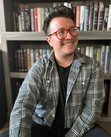Gabe Cole Novoa's Blog, page 38
June 6, 2016
Book Review: LOVE IN THE TIME OF GLOBAL WARMING by Francesca Lia Block
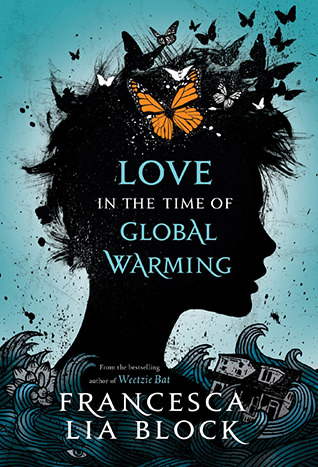 Photo credit: GoodreadsSo about a year ago I'd heard Francesca Lia Block's Love in the Time of Global Warming has a trans boy love interest, which I'd basically never seen in speculative YA (or Contemporary YA, for that matter), so when I saw it on sale at Book Outlet a while ago, I snatched it up. It then sat in my full physical TBR bookshelf for a while I tried to make a dent in my TBR, until I finally picked it up last week.
Photo credit: GoodreadsSo about a year ago I'd heard Francesca Lia Block's Love in the Time of Global Warming has a trans boy love interest, which I'd basically never seen in speculative YA (or Contemporary YA, for that matter), so when I saw it on sale at Book Outlet a while ago, I snatched it up. It then sat in my full physical TBR bookshelf for a while I tried to make a dent in my TBR, until I finally picked it up last week.And I have to say, I'm glad I pulled it off my shelf, because it was a really enjoyable read.
Before I go into why, here is the Goodreads summary:
"Her life by the sea in ruins, Pen has lost everything in the Earth Shaker that all but destroyed the city of Los Angeles. She sets out into the wasteland to search for her family, her journey guided by a tattered copy of Homer’s Odyssey. Soon she begins to realize her own abilities and strength as she faces false promises of safety, the cloned giants who feast on humans, and a madman who wishes her dead. On her voyage, Pen learns to tell stories that reflect her strange visions, while she and her fellow survivors navigate the dangers that lie in wait. In her signature style, Francesca Lia Block has created a world that is beautiful in its destruction and as frightening as it is lovely. At the helm is Pen, a strong heroine who holds hope and love in her hands and refuses to be defeated."So first of all, I think it helped going in knowing that this book would be weird. That was something I saw repeated over and over from reviewers—that they enjoyed it, but it was strange. I agree this is a strange one; the writing and events and the way it all blends together was very dreamlike. There's some really gorgeous, lyrical imagery, obvious Odyssey parallels (that the characters are aware of and comment on), and even the characters themselves have a dreamy, ephemeral-type quality to them.
And you know? I liked it. The lyrical, imagery-heavy writing reminded me a bit of Elliot Finley Wake's style (except, you know, YA), and it was great to see a diverse cast in a post-apocalyptic YA, from the protagonist Pen, who is bi, to the love interest Hex, who is (*minor spoiler*) trans, to their two other companions who also turn out to be queer guys, it was really fun to read.
My only critique is the ending felt a little too...neat, I suppose. Things came together easy after the main confrontation, which is okay, but it felt a teensie bit anti-climatic to me. That said, I still really enjoyed it overall, from the adventure-y plot, to the Odyssey-like mythology, and the lyrical writing, I definitely recommend Love in the Time of Global Warming for a quick, adventurous read with a cast you won't easily forget.
Diversity note: As mentioned in the review, Pen, the protagonist is bisexual, the love interest, Hex, is a trans boy, one of the two companions is a gay Black boy, and the other is a boy who likes boys (though I'm not sure if he's gay, bi, pan, etc.).
What have you been reading lately?
Twitter-sized bite:
.@Ava_Jae gives ⭐️⭐️⭐️⭐️ to Francesca Lia Block's LOVE IN THE TIME OF GLOBAL WARMING—is this surreal YA on your TBR? (Click to tweet)





Published on June 06, 2016 04:00
June 3, 2016
Discussion: How Do You Choose From Your TBR?
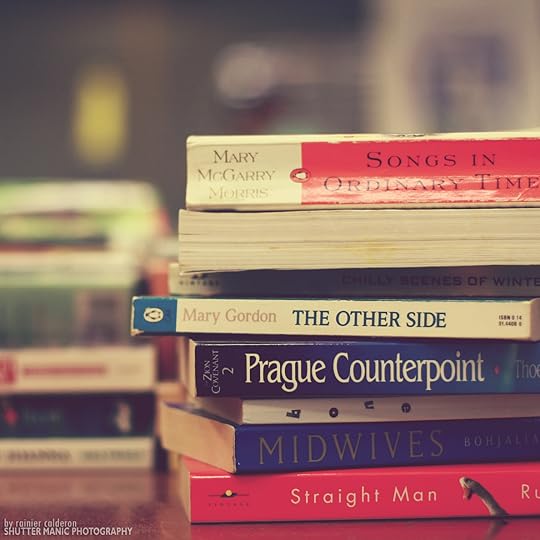 Photo credit: *Randee on FlickrSo as I look at my bookshelf full of owned-but-not-read books (yes, I have a bookshelf just for my physical TBR), it can sometimes be a challenge to figure out what to read next. I have so many choices in my TBR (forty-one at the moment, not counting e-books and pre-orders) without even attempting to look at my Goodreads TBR (which currently has over 300 books)—and sometimes the sheer number of options can be a little overwhelming.
Photo credit: *Randee on FlickrSo as I look at my bookshelf full of owned-but-not-read books (yes, I have a bookshelf just for my physical TBR), it can sometimes be a challenge to figure out what to read next. I have so many choices in my TBR (forty-one at the moment, not counting e-books and pre-orders) without even attempting to look at my Goodreads TBR (which currently has over 300 books)—and sometimes the sheer number of options can be a little overwhelming.What do I read next?
This month the choices have become a little easier because I'm quietly following along with #ReadProud hosted by Julia Ember to at least help me pick out some choices from my stack, including some that have been waiting to be read for a while, like Love in the Time of Global Warming (which I am loving so far) and Cut Both Ways . The only downside of course is once I've read those I will have read all the QUILTBAG books I own, but I suppose that just means I'll have to buy more...
Anyway. After those, I haven't quite decided what I'll pick up next. I've got quite a few series books I could jump into, though I'm thinking I should probably stick to the cases where I have the whole series, like Sekret, because otherwise I'll want to buy more. I also have quite a few stand alone titles I'd like to read, like The Last Leaves Falling, Bone Gap, The Scorpio Races, Dreamstrider, and My Heart and Other Black Holes.
I also have two series enders that I'd like to read, but are so thick I haven't delved in yet: Bitterblue and City of Heavenly Fire ...and those will probably stay on the shelf until I've gotten ahead on my yearly goal enough that taking a while to read them won't put me back much.
This is all to say I have too many choices, which is the best problem ever, but I'm curious. How do you decide what to read next from your TBR?
Twitter-sized bite:
Have a large TBR stack? How do you decide which book to read next? Join the discussion on @Ava_Jae's blog. (Click to tweet)





Published on June 03, 2016 04:00
June 1, 2016
On Gendering and Books
 Photo credit: upupandabear on FlickrSo last week I got an interesting question on Twitter, namely, if I had any tips for writing a book that would appeal to people across the gender spectrum. With Twitter being the place of brevity that it is, I told the person to just write whatever they want to, because stories aren't gendered, but I thought it was an interesting question to consider nevertheless.
Photo credit: upupandabear on FlickrSo last week I got an interesting question on Twitter, namely, if I had any tips for writing a book that would appeal to people across the gender spectrum. With Twitter being the place of brevity that it is, I told the person to just write whatever they want to, because stories aren't gendered, but I thought it was an interesting question to consider nevertheless.I stand by what I said—stories in and of themselves aren't gendered—but the way we market and talk about books often is. And even more so, the marketing is often (not always, but often) tilted one way or the other based off not the story, but the perceived gender of the author.
For example, let's take a look at some YA contemporary covers with romances, authored by dudes and ladies.


It's interesting looking at the mini-breakdown, because while there are totally exceptions, even though these covers have the same general audience (teens who like YA Contemporary with a splash (or more than a splash) of romance), there's a pretty clear difference between the covers for books authored by guys and those authored by ladies.
To start with, the books authored by guys rarely have a girl on the cover (and when they do, there are also boys on the cover). Even The Fault in Our Stars which is narrated by a girl goes for a more gender neutral (or even boyish) illustrated presentation without any figures on the cover. The illustrated covers for books written by ladies, however, do tend to have girls on the cover, or some kind of feminine indicator, like lipstick. Covers for books written by guys tend to be more illustration-heavy with less gender markers present; covers for books written by ladies often have photographic covers featuring a girl, often with who we assume will be her beau.
That's without looking at font or color scheme, and yes, of course there are exceptions (Jay Asher's Thirteen Reasons Why, for example, has a photographic cover featuring the girl protagonist), but it's kind of hard to ignore some of the not-so-subtle gendering of book covers based solely on the author's perceived gender.
This is one of the many reasons why female-identified authors writing speculative fiction sometimes use gender neutral pseudonyms (most famously J.K. Rowling)—even when the books feature a male protagonist, there's an assumption of sorts that (some) guys won't pick up books written by women, and I can't help but suspect the gendering of covers has a lot to do with it.
Of course, especially in more recent speculative fiction, there are a lot of covers that avoid gender markers entirely regardless of the gender of the author, which makes sense in order to appeal to a wider audience.

But in a world where AFAB (assigned female at birth) kids are taught to identify with characters regardless of gender and AMAB (assigned male at birth) kids are shamed for being too girly and largely fed a host of media for boys, it's no wonder girls won't blink at picking up a book no matter how "boyish" the cover seems, whereas some guys may hesitate to do the opposite.
Ultimately, in terms of writing, my advice remains the same: if you want to write a story that isn't gendered one way or the other (and it is totally valid, by the way, to want to write for an audience of one specific gender) then write what you want, however you want, and the right readers will enjoy it regardless of their gender. But it's also good to be aware, I think, of the ways a book is packaged can affect who picks the book up and takes a look inside to begin with.
Twitter-sized bite:
From book packaging to the story inside, @Ava_Jae talks about gendering and books. (Click to tweet)





Published on June 01, 2016 04:00
May 31, 2016
Vlog: First to Final Draft: BEYOND THE RED
You asked, I answered: today I compare the first draft of BEYOND THE RED's first page versus the final published draft.
RELATED LINKS:
All About BEYOND THE RED (Part 1)On Editing (YouTube Playlist)
What kinds of revisions do you tend to have to focus on with your drafts?
Twitter-sized bite:





RELATED LINKS:
All About BEYOND THE RED (Part 1)On Editing (YouTube Playlist)
What kinds of revisions do you tend to have to focus on with your drafts?
Twitter-sized bite:
What changes between 1st & final drafts of published books? @Ava_Jae vlogs BEYOND THE RED's 1st vs. final opening. (Click to tweet)





Published on May 31, 2016 04:00
May 30, 2016
Fixing the First Page Feature #23
 Photo credit: Tim Evanson on FlickrSomehow, we are nearly halfway through 2016 (which, ???) so it's time for the twenty-third fixing the first page feature!
Photo credit: Tim Evanson on FlickrSomehow, we are nearly halfway through 2016 (which, ???) so it's time for the twenty-third fixing the first page feature! As per usual, I'll start by posting the full first 250 excerpt, after which I'll share my overall thoughts, then my redline critique. I encourage you guys to share your own thoughts and critiques in the comments (because I'm one person with one opinion!), as long as it's polite, thoughtful, and constructive. Any rude or mean comments will be unceremoniously deleted.
Before I start, I'm going to put up a quick trigger warning for some potential fat-shaming here.
Okay. Here we go.
Title: THE CURED: REBIRTH
Genre: Young Adult Science Fiction
First 250 words:
"The weight of the world, of school, of family and above all else, his body weight, threatened to collapse all around on him. It pressured and gripped to him like a vice, appearing unresolvable until this very moment.
William Scott, at only fifteen, stood in front of the full-length mirror in his bedroom and couldn't help but smile. His lifelong problem with his weight had finally been over. He looked at the thin, bare-chested boy staring back at him. If it wasn't for the dark blue eyes and spiky black hair, he would barely recognize himself. The months he spent working out seemed to zip by as if he had been in a trance, unaware of the exercise or the results it produced. He'd certainly put in the work, training everyday even on the weekends yet he couldn't fathom how he'd gotten so thin, in such a short period. Most of his life had been spent as a more round and chubby figure, making him less confident and insecure when it came to the basics like sports, friendships, or girls. He wanted so badly to fit in, not in the sense of popularity but just to believe that he, did in fact belong somewhere. Most of his friends were thin and the teasing from them specifically, is what ashamed him. When he had brought home straight A's, he was sure his father would be more proud of a son, who brought home a sports trophy and had a girlfriend by now. That feeling of being alone and stuck inside a cave would only intensify as the years drew on, when his father would shout and cheer more for his favorite soccer team scoring a goal, than anything Will ever did."
Okay then! So. I'm noticing quite a few things off the bat that need some attention. This opening has a couple common errors I've mentioned in previous Fixing the First Page critiques. Firstly, this is all exposition, which I definitely recommend against for openings. Exposition slows down pacing a ton, which you really don't want in an opening when you're trying to draw readers in.
Secondly, I'm 99% sure this isn't starting in the right place—which is also a common error because openings are hard. When deciding where to start a book, I like to think about what the inciting incident is, then take a step (or half a step) back. Get us close enough to the incident that we know something is wrong (or about to be wrong) and the tension of that impending wrongness is there on the page, which will pull readers in.
I'm going to note a few other things in the in-line notes, but last thing I want to say here is to be very careful with fat-shaming. A lot of people have spoken out within the YA community about how they're (rightfully) tired of books that perpetrate the their life become so much better after they lost weight! message that's so common, and I'm seeing a lot of that here. That's not to say that people who are fat don't get teased (obviously they do), or none of them struggle with confidence issues (definitely a thing), or that none of them ever want to lose weight (obviously not true), but you definitely want to be careful with what messages you're sending with your writing, especially when it's for teens. (And related to that, I hope "The Cured" in your title isn't referring to formerly fat people...because that would have a lot of negative implications. I'm hoping it's something else, but given how quickly your protagonist lost weight, it makes me wonder.)
Okay! So while I would rewrite this and start later in your story (as I mentioned above), here are in-line notes too:
"The weight of the world, of school, of family and above all else, his body weight, threatened to collapse all around on him. It pressured and gripped to him like a vice, appearing unresolvable until this very moment. Okay, so two things to start with here: firstly, be careful with voice. This is YA, and even though it's third person, your narrator should still sound like your protagonist—in this case, 15-year-old Will. Think about the kind of words Will would use, and the ways you could imbue Will's personality into the narrative voice.
Secondly, I found this a little confusing to start with, because we don't know who he is until the next paragraph, and it's not coming from Will, per say—more like someone is talking about Will. Have you ever been dropped into a conversation where people are talking about someone, but you don't know who it is? I got that same disorienting feeling to start with.
William Scott, at only fifteen, stood in front of the full-length mirror in his bedroom and couldn't help but smile. Describing your character describing themselves while looking into a mirror tends to be a mistake new writers make (which is okay! Pretty sure I made this mistake plenty, too). The reason this is considered a mistake is because it reads rather contrived, and it's pretty unnatural—I mean, in real life, people don't look into the mirror and sit there describing themselves, you know? It also completely stops the narrative to focus on description, which slows the pacing down. I recommend instead dropping a few telling details here and there throughout the narrative (it doesn't have to be all at once!). But remember, you don't need to tell readers every single descriptive detail—readers will fill in the blanks. His lifelong problem with his weight had finally been over. There's a lot of it in this paragraph, but this is an example of what I'm talking about with fat-shaming. For an excellent article on Fatphobia in YA, check out "Kill the Fatphobia: Fat Girls in YA" by the awesome Sarah Hollowell. Not saying you can't write about a teen who lost weight because of confidence issues, but I do want to make sure you're aware and very careful with this topic. :) He looked at the thin, bare-chested boy staring back at him. If it wasn't for the dark blue eyes and spiky black hair, he would barely recognize himself. The months he spent working out seemed to zip by as if he had been in a trance, unaware of the exercise or the results it produced. He'd certainly put in the work, training everyday even on the weekends yet he couldn't fathom how he'd gotten so thin, in such a short period. So this and most of what follows is a lot of background information. I've mentioned this in critiques before, but I'd like to reiterate to be careful with how much background information you put in openings (I tend to advise to only include what is essential to understand the opening), and especially be careful with how much you introduce at once. I think this is too much information to have in an opening, because you've paused the action in order to give us this information, before readers can really sink into the story. Instead, I recommend sprinkling this information throughout your story—through dialogue, Will's thoughts and actions, etc. For help with this, here is a blog post on avoiding info dumps, and a vlog on info dumps.
(If you're going to keep all of this info, I would put a new paragraph here, because eleven sentences is pretty long for a single paragraph.) Most of his life had been spent as a more round and chubby figure, making him less confident and insecure when it came to the basics like sports, friendships, or girls. He wanted so badly to fit in, not in the sense of popularity but just to believe that he, did in fact belong somewhere. Most of his friends were thin and the teasing from them specifically, is what ashamed him. This is a little awkwardly worded. You may want to try condensing and rearranging the sentence to something like: "Teasing from his thin friends had made him feel terrible for so long." When he had brought home straight A's, he was sure his father would be more proud of a son, who brought home a sports trophy and had a girlfriend by now. That feeling of being alone and stuck inside a cave would only intensify as the years drew on, when his father would shout and cheer more for his favorite soccer team scoring a goal, than anything Will ever did."
Okay, so overall I think this still needs some work, and I suspect moving closer to the inciting incident, wherever that is, would make for a stronger hook. But if I saw this in the slush as is, I would pass.
I know there's a lot of info here, so I hope it helps! Thanks for sharing your first 250 with us, Enricoh!
Would you like to be featured in a Fixing the First Page Feature? Keep an eye out for the next critique giveaway in June!
Twitter-sized bite:
.@Ava_Jae talks character intros, considering teen readers & more in the 23rd Fixing the First Page critique. (Click to tweet)





Published on May 30, 2016 04:00
May 28, 2016
Fixing the First Page Winner #23!
 Photo credit: Kim BostQuick Saturday post to announce the winner of the twenty-third fixing the first page feature giveaway, because I was sick this week and forgot to post it earlier!
Photo credit: Kim BostQuick Saturday post to announce the winner of the twenty-third fixing the first page feature giveaway, because I was sick this week and forgot to post it earlier!*drumroll*
And the twenty-third winner is…
ENRICOH ALFONZO
Yay! Congratulations, Enricoh!
Thank you to all you awesome entrants! If you didn't win, as always, there will be another fixing the first page giveaway in June, so keep an eye open! :)





Published on May 28, 2016 04:00
May 27, 2016
Discussion: Reading Outside Your Comfort Zone
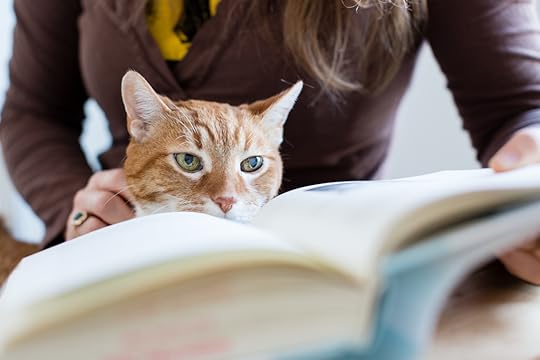 Photo credit: TheGiantVermin on FlickrI read YA a lot—like, way more than I ever did when I was a teen. And given that I'm a YA author, it's literally in my job description, so it makes sense and it's something I need to do so I can keep challenging myself and staying away of what's out there in the market.
Photo credit: TheGiantVermin on FlickrI read YA a lot—like, way more than I ever did when I was a teen. And given that I'm a YA author, it's literally in my job description, so it makes sense and it's something I need to do so I can keep challenging myself and staying away of what's out there in the market.But while genre-wise I read pretty widely within YA, sometimes I need to remind myself to push outside of my comfort zone and pick up some books in other categories, because another part of being a writer is taking in new voices and listening listening listening.
So this year I've been picking up a couple books here and there outside of YA, from MG (like The Last Great Adventure of the PB&J Society ), to NA (like Strong Signal, and Out of Frame ), to Adult (like A Darker Shade of Magic and A Gathering of Shadows ), to graphic novels (like the first hardcover volume of Saga ).
It's been fun to read totally new things and expose myself to new voices, and it's something I'd like to keep doing. I've got some Middle Grade like The Last Fifth Grade of Emerson Elementary, Paper Wishesd, The Last Boy at St. Edith's, Bounders, and Marco Impossible on my TBR, but I'd especially love some graphic novel recs (where do you even go to after Saga), and good book recs in general. Because why not?
So what are you guys reading? Anything outside your usual reading habits? And what should I add to my TBR?
Twitter-sized bite:
Want to try reading outside your comfort zone? Check out the discussion on @Ava_Jae's blog. (Click to tweet)





Published on May 27, 2016 04:00
May 25, 2016
How to Manipulate Scrivener Labels
So last week I participated in #YAGetsStuffDone on Twitter, which was a tag that lasted a week and encouraged goal-setting and cheering each other on to get their goals done. One of my goals was to finish plotting a project I'd barely started brainstorming, which I did both in Word and Scrivener simultaneously, writing the synopsis in Word and transferring it over to Scrivener on scene cards to get everything ready for drafting.
When I finished on Saturday, I posted my results, which looked like this:
A lot of people appreciated the color coding, as I did (it's so pretty to look at!), and some asked how to change the colors around in Scrivener, so I figured I'd write a quick post about it.
You can do color coding for a whole host of things—for two projects I drafted with chronically ill characters, I used the colors to signify different pain levels, for example—but I most often use it when I'm drafting a dual or multi-POV novel.
When writing a multi-POV novel, each color signifies a different POV. I like to do it this way because it helps me visually see the spread of different POVs, so no one character gets too much (or little) screen time. This is especially helpful in the brainstorming stage because it forces me to think about whose POV each scene will take place in and why.
Luckily, manipulating the labels in Scrivener so I can do this quickly is really easy.
Right click an index card —> Label —> Edit...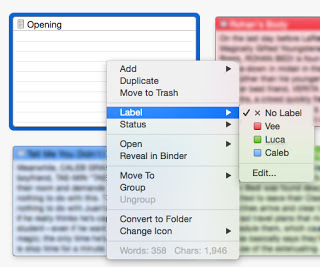
Open Meta-Data Settings. Here you can change the name of your labels, add more labels, remove some labels, change the colors by double-clicking the color box, etc. As I said, I do one label per POV character, but however you set it up is up to you. Once you're done, click "OK."
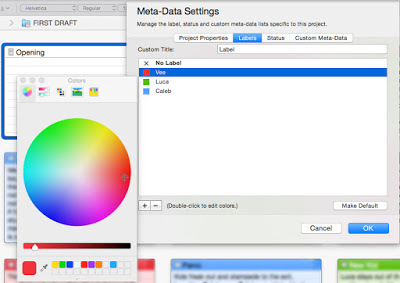
View —> Use Label Color In —> Pick your settings. I like to check off Binder, Index Cards, and Outliner Rows, so the index cards change colors and so do the labels in the row of scenes. If you want the little index card icon to change colors too, then you can also check off "Icons" but I don't usually bother with that.
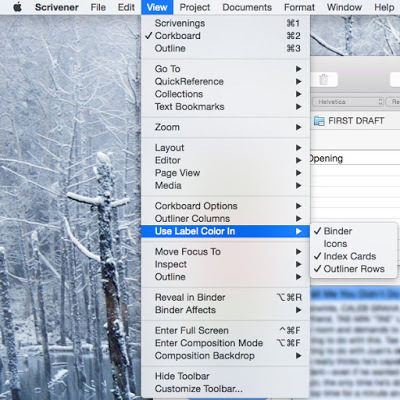 And that's it! From there, whenever you want to change the label (or color) of the index card, you just Right click —> Label —> [Pick your label]. The colors will change automatically as you go label to label.
And that's it! From there, whenever you want to change the label (or color) of the index card, you just Right click —> Label —> [Pick your label]. The colors will change automatically as you go label to label.
It's that easy and the results are not only visually pleasing, but helpful for organizational purposes. I definitely recommend it if you like to add a little splash of helpful color to your outlines.
Note: Like many Scrivener features, I'm not sure if all of this is available in the Windows version. It might be! But it might not. I have the Mac version so I'm not sure.
Have you ever used the label feature in Scrivener?
Twitter-sized bite:





When I finished on Saturday, I posted my results, which looked like this:
My final #YAGetsStuffDone goal is COMPLETE! #MagicMurderMayhem WIP idea is fully plotted from beginning to end and it was so much fun. 7 1/4 pages and 4,000 words in the outline, 45 scenes, 3 POVs, and 350 spontaneous opening words. Hell yeah. Now to, you know, write the thing at some point. And hope drafting goes as well as plotting. #authorlife #writing #writerlife #plotterA photo posted by Ava Jae (@ava_jae) on May 21, 2016 at 12:40pm PDT
A lot of people appreciated the color coding, as I did (it's so pretty to look at!), and some asked how to change the colors around in Scrivener, so I figured I'd write a quick post about it.
You can do color coding for a whole host of things—for two projects I drafted with chronically ill characters, I used the colors to signify different pain levels, for example—but I most often use it when I'm drafting a dual or multi-POV novel.
When writing a multi-POV novel, each color signifies a different POV. I like to do it this way because it helps me visually see the spread of different POVs, so no one character gets too much (or little) screen time. This is especially helpful in the brainstorming stage because it forces me to think about whose POV each scene will take place in and why.
Luckily, manipulating the labels in Scrivener so I can do this quickly is really easy.
Right click an index card —> Label —> Edit...

Open Meta-Data Settings. Here you can change the name of your labels, add more labels, remove some labels, change the colors by double-clicking the color box, etc. As I said, I do one label per POV character, but however you set it up is up to you. Once you're done, click "OK."

View —> Use Label Color In —> Pick your settings. I like to check off Binder, Index Cards, and Outliner Rows, so the index cards change colors and so do the labels in the row of scenes. If you want the little index card icon to change colors too, then you can also check off "Icons" but I don't usually bother with that.
 And that's it! From there, whenever you want to change the label (or color) of the index card, you just Right click —> Label —> [Pick your label]. The colors will change automatically as you go label to label.
And that's it! From there, whenever you want to change the label (or color) of the index card, you just Right click —> Label —> [Pick your label]. The colors will change automatically as you go label to label. It's that easy and the results are not only visually pleasing, but helpful for organizational purposes. I definitely recommend it if you like to add a little splash of helpful color to your outlines.
Note: Like many Scrivener features, I'm not sure if all of this is available in the Windows version. It might be! But it might not. I have the Mac version so I'm not sure.
Have you ever used the label feature in Scrivener?
Twitter-sized bite:
Want to color-code your outline in Scrivener? @Ava_Jae breaks down an easy way to do so. (Click to tweet)





Published on May 25, 2016 04:00
May 24, 2016
Vlog: How to Make a Fantasy Map
So I've covered world building and fantasy languages, and now I'm adding one more world building tool: fantasy maps! Here's your step-by-step guide to my map creation process.
RELATED LINKS:
World Building Part 1World Building Part 2World Building Part 3World Building Part 4On Creating Fantasy Languages
Have you ever made a map for a WIP?
Twitter-sized bite:





RELATED LINKS:
World Building Part 1World Building Part 2World Building Part 3World Building Part 4On Creating Fantasy Languages
Have you ever made a map for a WIP?
Twitter-sized bite:
Think a map may be helpful for your WIP but don't know where to start? @Ava_Jae vlogs her step-by-step process. (Click to tweet)





Published on May 24, 2016 04:00
May 23, 2016
We Are Our Own Worst Critics
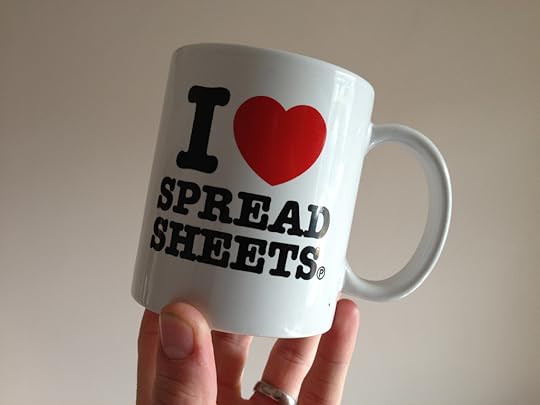 Photo credit: CraigMoulding on FlickrOver the weekend I stumbled over my awesome agent sib Katie Locke's newest post, "Juggling, Attention, Ambition, and Goal-Setting." I frequently enjoy Katie's posts because like me, she works best with organization, and she has some really great methods that have helped me in the past.
Photo credit: CraigMoulding on FlickrOver the weekend I stumbled over my awesome agent sib Katie Locke's newest post, "Juggling, Attention, Ambition, and Goal-Setting." I frequently enjoy Katie's posts because like me, she works best with organization, and she has some really great methods that have helped me in the past.So anyway, in the post she mentioned putting all her potential project ideas into a spreadsheet to help her organize and also strategize with her agent. This was the second time I'd heard her mention this spreadsheet, which reminded me of my own Evernote note I called my Project Pipeline, but it sounded more organized than the bullet list I had, so I tried it out and made my own spreadsheet.
Now, you guys might remember me mentioning I'm not the kind of writer overflowing with ideas. I often struggle to get any ideas at all, and then kill most of them off when brainstorming/plotting, and then kill about half of those survivors within the first 10,000 words of first drafting, and then often kill half of those after I draft them because...I'm just not feeling it anymore.
So the ideas that do rise to the surface and actually make it to the editing stage have gone through a lot of hurdles already. This is why I often don't feel comfortable talking much about the projects I'm working on while I'm brainstorming and drafting—I know all too well the likelihood of that project making it to the revision stage is...not the best. So telling other people about those ideas before I know for sure whether or not they'll ever get drafted makes me nervous, because once I've told them, I don't want to let them down by deciding not to pursue it.
All of this played into why when I was between projects not too long ago, I was having major self-doubt issues. I hadn't drafted something new in over a year, I was dealing with that what if I never publish anything again ever fear (not uncommon amongst published writers, regardless of how many books they've published), and I was uncertain about the few ideas I did have—they were only partially brainstormed and I felt them slipping through my fingers.
Add this to my first ever impending book release, plus college graduation looming closer and closer, and you can understand why my confidence was pretty shaky, to say the least.
So anyway, point is I had this sense that I didn't have all that many ideas. That I was running out of options and needed to come up with something new ASAP. So I first drafted a thing, and that helped, and then I stumbled over an idea I'd written and partially brainstormed during class then forgotten about, and that helped too. And then I saw Katie's post and made a spreadsheet and realized...
Well. Apparently I have nine projects to play around with. One is already written and ready to go. Some are fully plotted and need to be written. Some were written ages ago and need an overhaul. One I finished plotting over the weekend.
But as much as my brain sometimes makes me believe otherwise, looking at the spreadsheet I realized they were all viable options. Some needed more work than others, sure, and some were absolutely not viable options until I did some major revision surgery (or rewrote entirely), but they were possibilities. Real, actual possibilities.
Nine of them.
It was kind of amazing to see how different it felt to move these projects from an unnumbered list to a spreadsheet. To realize that even if I tossed a bunch of them, I still had plenty more to play around with.
It was also a really great reminder that we are our own worst critics. For so long I was so worried about not having something new to work on, but all I needed to do was sit down and refocus. All I needed to do was give myself some credit for the work I'd already done.
A little organization can go a long way in terms of both productivity and boosting your confidence. Sometimes all we need is to tell our brains to be quiet for a moment while we reflect on what we have simmering on the back burner.
How do you keep track of your ideas or potential projects?
Twitter-sized bites:
How can spreadsheets boost your confidence? @Ava_Jae explains how @bibliogato's method helped her. (Click to tweet)
On productivity, confidence, and giving yourself credit for the work you've already done. (Click to tweet)





Published on May 23, 2016 04:00

